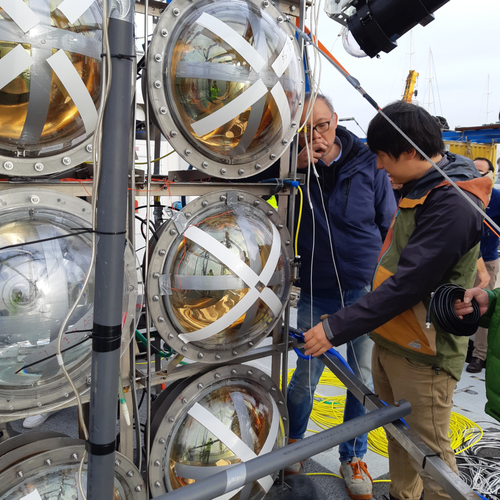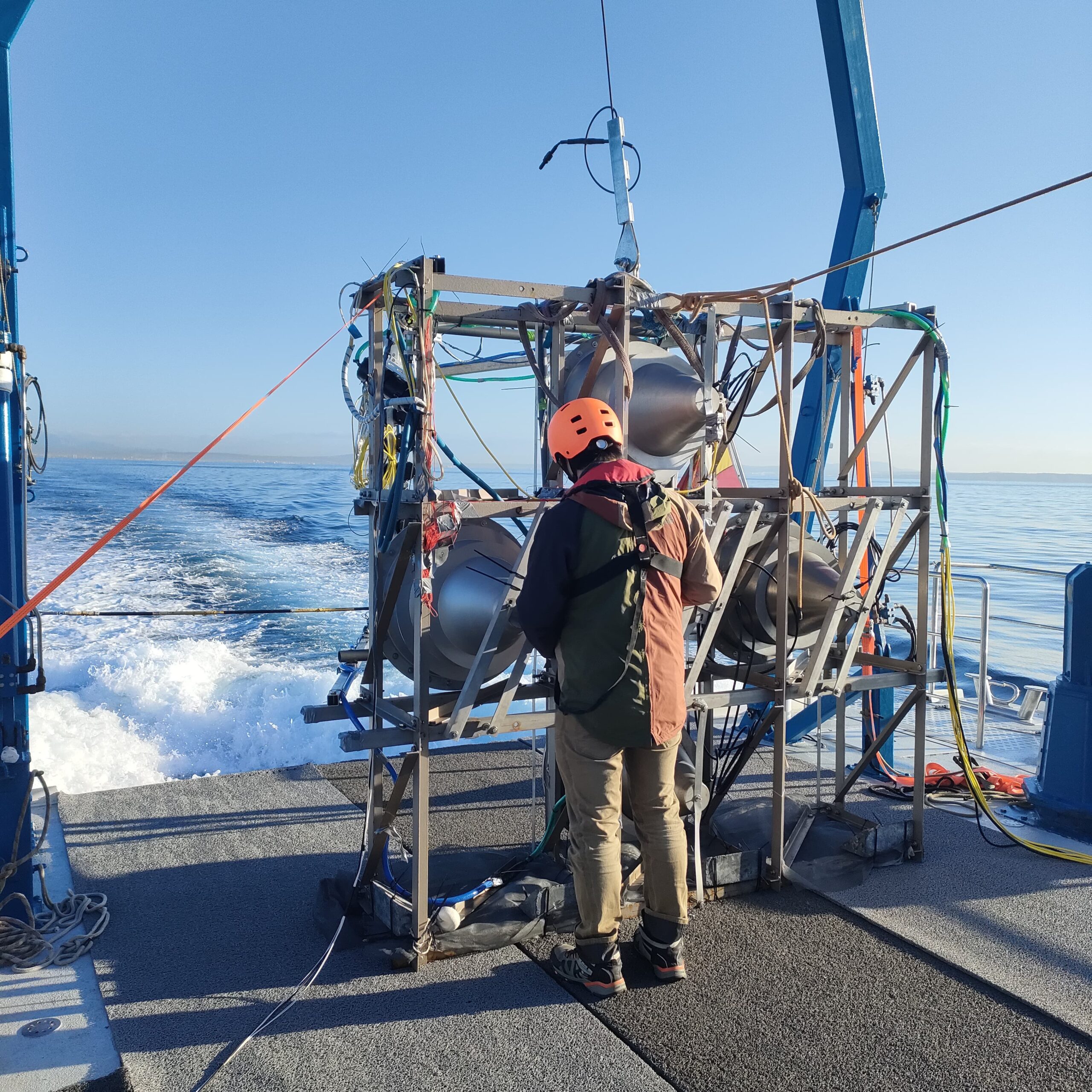The ICTS SOCIB collaborates with the Laboratorio Subterráneo de Canfranc in the validation of key protective covers for the international Hyper-Kamiokande neutrino telescope

The Balearic Islands Coastal Observing and Forcasting System (ICTS SOCIB) has collaborated with the Laboratorio Subterráneo de Canfranc (ICTS LSC) in validating key protective covers for the future Hyper-Kamiokande neutrino telescope, an international project with Spanish participation. This cooperation between Unique Scientific and Technical Infrastructures (ICTS) has been made possible thanks to the capabilities of the Research Vessel R/V SOCIB and the technical team of ICTS SOCIB, enabling the evaluation of light sensors under extreme conditions. To achieve this, they were subjected to 50-bar pressure waves during dives to a depth of 80 meters in the Mediterranean.
This collaboration has facilitated their validation by combining LSC’s expertise in particle physics with SOCIB’s ability to conduct tests in real oceanic environments. The joint effort highlights the key role of ICTS in the development of cutting-edge scientific projects.

Image: Validation of key protective covers for the international Hyper-Kamiokande neutrino telescope aboard the Research Vessel R/V SOCIB. Laboratorio Subterráneo de Canfranc (ICTS LSC).
The validation tests involved engineers and physicists from LSC, the Donostia International Physics Center (DIPC), the Universidad de Girona (UdG), and the Universities of Keio, Osaka, and Tokyo, as well as the Institute for Cosmic Ray Research (ICRR) in Japan, along with the technical staff of ICTS SOCIB.
Following the success of these tests, the validation of these protective covers, developed in collaboration with the Spanish industry for production, is announced today in Japan, marking a milestone in the contribution of Spanish industry and research to the project. This step will enable progress toward the large-scale manufacturing of key telescope components, which is scheduled to be operational by 2027. Hyper-Kamiokande will investigate the essential properties of neutrinos, providing key insights into astrophysical phenomena such as supernovae and the processes that generate solar energy.
International cooperation
With the participation of more than 600 researchers from 20 countries across six continents, Hyper-Kamiokande is a prime example of global scientific cooperation. In this context, "the collaboration between SOCIB and LSC strengthens the international reach of Spanish research and underscores the importance of interdisciplinary cooperation in developing new scientific infrastructures," highlights Carlos Peña, director of ICTS LSC.
Furthermore, "this initiative highlights the role of ICTS within the scientific community, promoting access to its services and capabilities. It also demonstrates the potential of the infrastructure roadmap developed over the past two decades, fostering strategic synergies between disciplines, research centres, and the private sector. All of this contributes to the competitiveness of European industry, fully aligned with the 2024 Draghi Report of the European Commission, which emphasizes the key role of research infrastructures in Europe’s competitiveness," states Joaquín Tintoré, director of ICTS SOCIB.
Technological innovation in sensor development and impact on the Spanish industry
Peña highlights the progress achieved in collaboration with various Spanish and international institutions: "The Spanish groups from the research centers LSC, UdG, and DIPC, in collaboration with Keio, Osaka, and Tokyo Universities, the ICRR, and the Spanish industry, have developed multiple technological innovations. Notable advancements include improvements in the design and manufacturing of protective sensor covers, made of UVT acrylic and steel; a sensor attachment system to the protective cover; and an underwater detection system that has allowed us to validate the resistance of these components to sudden pressure variations."
Deep-water validation has been key to confirming the effectiveness of these innovations, according to Peña: "The SOCIB Vessel has enabled us to conduct daily tests in an area near the Bay of Palma, at depths exceeding 100 meters. The experience and equipment of the SOCIB technical team and crew have been essential in overcoming the inherent challenges of conducting these experiments."
These tests have confirmed that the detector protection system, designed by Spanish research groups and manufactured by national industry, ensures detector safety in the event of the failure of any of its 20,000 sensors. "For the first time, we have observed that by deliberately generating an expansive wave in the medium, the protection system mitigates the chain reaction, preventing the risk of a catastrophic incident," Peña adds.
The successful validation has enabled progress to the pre-production phase, with 12,400 units being manufactured, funded by the Ministry of Science, Innovation, and Universities (MICIU) through the Recovery and Resilience Mechanism (MRR). "We hope that demonstrating the high quality of national industrial production at an international level will open new opportunities in emerging markets," Peña explains.
A testing ground in the Mediterranean for global science
The recent discovery in the Mediterranean of the most energetic neutrino ever detected by the KM3NeT underwater telescope, with an energy 20 times higher than any previously recorded neutrino, reinforces the importance of experiments designed to study these fundamental particles. In this context, "the Mediterranean is establishing itself as a strategic environment for research, providing ideal conditions for the validation of essential technologies in major international experiments," concludes Tintoré.




